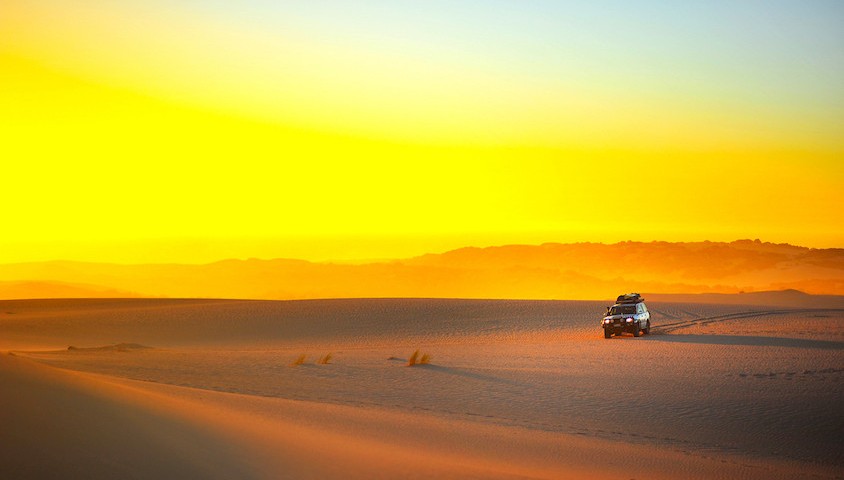The Philosophy of Travel (Escape Media, $69.95)
Publisher and host of 4WD Touring Australia, Carlisle Rogers has collectively travelled some 100,000 kilometres in the Australian outback, capturing many of the places and people he encounters on film.
Combining his unique photographs with snippets of adventuring wisdom, Rogers has recently released The Philosophy of Travel – a cloth-bound, hardcover slab of a book that will inspire just about anybody to pack their bag and head out the door.
Wild recently interviewed Rogers to find out a little more about his motivation and process for producing the tome. The following is a transcript of that dialogue.
Carlisle, how has your passion for travel and the outdoors shaped your career?
As a young man my goal was to find a way to travel for a living. Photography and writing, both passions in themselves, would be my ticket. I grew up travelling around the eastern seaboard of the US, hiking the Appalachian Trail and going on long aimless motorcycle drives with my dad.
With that grounding, I’ve always appreciated being outside, looking for Thoreau’s ‘tonic of wildness’. It’s that search for meaning in the desert, in the high country, on the highway, that keeps me going.
Why is sharing this passion with others important to you?
Like the transcendentalists, I believe that nature, or our connection with it, might hold the answer to many of our modern ‘ills’. It can seem so far away, though, beyond the power lines of the suburbs, beyond the workaday schedule. I hope I can inspire a few souls to endure the gauntlet of traffic lights, to get out of their comfort zone and go experience the stillness of the open road for themselves. It may be true that the only god you find in the desert is the one you bring with you… but under the milky way that voice isn’t drowned by static, and we can finally just listen.
Why have you chosen to focus on the philosophy of travel in your book? What lends you as a person to this niche?
Nothing. I am just a seeker on the open road. Like Basho with his wooden bowl, I go out empty-handed looking for handouts of wisdom from the world. I know it won’t let me starve. There are so many paths to the top of the mountain, but for me, nothing lets me think clearly, nothing lets me gaze, momentarily, through the gauze of oblivion like travelling. Since Lopez, Least Heat-Moon, Chatwin, even Thesiger, I hadn’t seen anyone really grasp why we’re out there…and I thought I had something to lend to the conversation after half a life spent wandering around.
How did you take the initial concept through to development? How long did it take to put the book together and what processes did you go through to make it happen?
The writing for the book was done over the last four years, each essay opening up an issue of a magazine I publish, 4WD Touring Australia. The images are the product of the last four years of a whirlwind schedule of driving and flying around the Australian Outback. I had the idea floating around in my head to compile the essays for a while, and once I had worked out the title, it took about two months to put everything together, to re-edit the essays I had written over such a long period, and to cull down a selection of around a thousand images into something that would fit into a single work.
Can you tell me about a time when the philosophy of travel has intersected with the reality of it for you?
I was always really drawn to Robert Hughes’ thoughts on learning to see the “…sign that it is happening is the fact that you are not bored by the absence of the spectacular.” On a recent trip through the Simpson Desert following Madigan’s 1939 camelback route, the concept came alive, like every proverb will once you’ve lived enough. I was looking out at a landscape each morning that seemed monotonous: wave after wave of windblown orange sand, ring after endless ring of spinifex, and an azure sky that washed everything from horizon to horizon in gleaming glare. It took a few days to settle into the place, to begin to notice how violently the flora changed over each dune, how much every kilometre of the desert was its own isolated biome. The desert had not changed, but I had. What makes the desert beautiful, Saint-Exupéry tells us, is that somewhere it hides a well.




